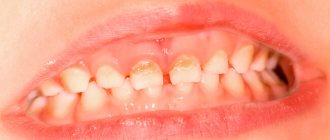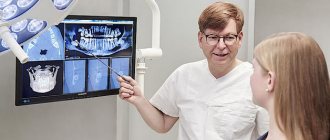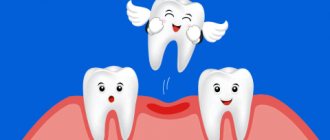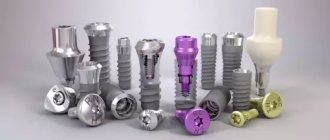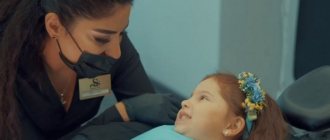The loss of the first milk tooth is a new and important stage in the physiological development of a child. After all, baby teeth fall out when the rudiments of permanent teeth are ready to grow . If the change of teeth goes according to schedule, and the child’s teeth are healthy, he has every chance of getting the same healthy permanent teeth. But very often baby teeth have to be removed prematurely due to untimely treatment of caries and its complications, as well as due to injuries. Many parents think that these are just temporary teeth and nothing to worry about, but this is not entirely true .
Indications for removal of baby teeth
In the absence of pathologies and good dental health, the renewal of the child’s bite begins at approximately the age of 5-7 years. The permanent molars are already ready to replace the baby teeth, so the latter become mobile and often fall out on their own.
The ideal scenario makes everyone happy, but sometimes the removal (extraction) of baby teeth is an objective necessity. Indications are determined by the dentist:
- Loose baby teeth. The strong mobility of the changing tooth bothers the child. Unpleasant sensations occur when talking or eating. There is a danger of gum inflammation.
- Supernumerary tooth. An extra unit interferes with the formation of a correct bite, so after consultation with an orthodontist it is often recommended to be removed.
- Beginning of permanent molar tooth eruption. In this case, the baby tooth becomes a nuisance, which it is advisable to remove as soon as possible.
- Severe tooth decay due to deep caries, pulpitis or periodontitis. The dentist will make every effort to save the baby tooth, but in case of serious damage to the crown, there is only one solution - removal.
- Crack and mechanical damage. A crown split, root fracture and other consequences of severe trauma are a reason to remove the destroyed unit.
- Bite correction. To ensure the correct positioning of teeth in the jaw, it is often necessary to forcefully remove individual units. But this is done after consulting an orthodontist.
- Inflammatory processes in the area of the tooth root. Granuloma, fistula or cyst is a threat to the health of the root system of permanent elements. Usually, the doctors at AzaBuka Pediatric Dentistry manage to cure the inflammation. If not, removal is inevitable.
The reasons for the removal of temporary teeth can be very different, but modern pain relief techniques make the extraction procedure painless and comfortable for the child. It is best to schedule an adaptation visit as your first appointment. If the baby is already familiar with doctors, then you can immediately make an appointment with a dental surgeon.
Adaptation in dentistry is a series of introductory sessions for children, during which children are introduced to the work of dentists, equipment, and tools. Communication takes place in a fun, playful way with the display of informational cartoons, fairy tales, and interesting dental models. After adaptation techniques, children cease to be afraid of doctors and willingly agree to all types of treatment.
Consequences of early removal
In primary occlusion, the chewing teeth are usually the first to begin to deteriorate, and they must last at least ten years before falling out. Unfortunately, after their removal, the process of eruption of permanent teeth does not accelerate - after all, they are still in an immature state in the jawbone, their roots have not yet been formed.
As a result of the removal of baby teeth:
- The child is deprived of the opportunity to fully chew food. The anterior part of the dentition cannot cope with the load placed on it. Some food is swallowed in an insufficiently crushed form. This leads to diseases of the gastrointestinal tract.
- The chewing muscles receive uneven load, which affects the development of the jaw bones. Those parts of the jaw that are excluded from the chewing process due to the absence of teeth slow down their growth. This is how maxillofacial anomalies arise that require long-term orthodontic treatment.
- If baby teeth are removed long before the time of change of bites, then the eruption of their permanent counterparts is difficult due to the presence of a thick layer of bone on the alveolar process. In this case, the teeth erupt either outside the dental arch (dystopia) or even become immured in the jaw (retention).
- The first permanent tooth, the “six”, appears at 6 years of age. The entire permanent dentition is aligned along it. If there are no milk teeth in front of the “six”, then it moves closer to the center of the jaw, and there is not enough space for the remaining teeth. This results in crowding of teeth in the anterior region, which is a serious cosmetic drawback.
- Underdevelopment of the jaw occurs as a result of shortening of the dentition. Underdevelopment of the jaws is manifested in a violation of the proportions of the face, a change in the configuration of its parts. Psychological complexes are formed that require long-term treatment from a specialist.
- Problems with diction appear, and hence the psychological discomfort that the child experiences when communicating with peers.
- Dystopia leads to periodontitis – inflammation of the soft and bone tissues surrounding crowded teeth.
- Inflammatory processes in the periodontium and intestines cause a decrease in immunity. Due to frequent colds, the child’s mental and physical development slows down.
Taking good care of baby teeth in childhood will save you from many problems in the future.
Is it painful to remove a child's baby tooth? Anesthesia decides everything!
The question of tooth pain relief during extraction is the most frequently asked question by parents. The wishes of adults vary: some want extraction without medications, others insist on full anesthesia. AzaBuka provides several anesthesia methods for children, and when selecting, the doctor always focuses on the individual characteristics of young patients.
In rare cases, they do without pain relief. This is real if the baby tooth is very mobile, and its permanent replacement is already emerging through the gums. In this case, the doctor removes the tooth during an examination of the oral cavity, and the child does not even notice the manipulation. There is simply no point in worrying about whether it is painful to remove a baby tooth in children, but such techniques are rare.
Plaksina Margarita
“One young gentleman had his upper tooth so loose that it was turning in all directions. But it didn't fall out. The boy did not let his parents pull the tooth, but he allowed himself to be examined at the reception and quite willingly opened his mouth. Imagine his surprise when I put the pulled out tooth on his palm literally a minute later. He left happy - with a reward for courage and a milk tooth in his hand.”
Most often, dentists resort to local or thorough anesthesia - they use one of the types of modern anesthesia:
- Superficial. The doctor treats the gums with a special gel that gives a slight freeze. This is done for easy removal of highly mobile teeth or at the site of a future anesthetic injection.
- Local (infiltration). To administer the anesthetic, the doctor uses a syringe with a very thin needle, so the discomfort is minimal. The selection of the drug is carried out in the presence of parents to eliminate the minimal likelihood of an allergic reaction.
- Sedation, shallow sleep. The technique is becoming increasingly popular - both children and adults enjoy it equally. Using an inhalation mask, the child is offered to breathe a special gas - a mixture of nitrous oxide and oxygen. The relaxing effect puts the patient into a state of semi-sleep. The baby understands everything, can follow the doctor’s requests, but does not panic, is not nervous or worried.
Why do baby teeth deteriorate?
Damage to a baby tooth most often occurs due to caries in early childhood. This disease can take different forms. The wrong way to feed a baby can lead to bottle tooth decay. If the baby falls asleep with a bottle in his mouth or is given formula or sweet tea after waking up at night, then streptococcal bacteria develop in the mouth during sleep. They are the ones who contribute to the occurrence of this variant of the disease.
In older children, two and three years of age, circular caries is observed. This is the name of the early stage of caries with an acute course. It first begins to attack the front teeth, most often in the upper jaw and symmetrically on both sides, and then leads to pulp complications. A tooth with a damaged crown is not suitable for root canal treatment and must be removed. Leaving a baby tooth damaged by caries is dangerous because it is an inflammatory source in the child’s mouth.
Another very common cause of loss of baby teeth is childhood trauma. It is not uncommon for a child to lose teeth due to a fall. One of the main reasons is that the design of primary incisors is completely different from permanent incisors. They are smaller, have shorter roots, and the jaw bones are more spongy. Children of certain ages are at greater risk of injury:
- the first and second years of life are when they are just learning to walk, but the older the child, the greater the risk;
- later, at the age of four to six, other activities appear: playing with a ball, running, climbing.
So it is not difficult to lose a tooth. Often, the premature loss of baby teeth in children is not given much attention. However, the roots of an extracted baby tooth are usually not completely resorbed, and the root of a permanent tooth is still in the early stages of development. This has quite serious consequences, so the indications and contraindications for removal should not be ignored.
General anesthesia.
Removal or treatment of teeth in a dream is prescribed for certain indications. The appointment is carried out under the supervision of an anesthesiologist with the mandatory use of monitoring equipment.
Dolotova Marina
“Is it painful to remove a baby tooth for a child under sedation - if it doesn’t wobble? Absolutely not. Usually during the appointment, the children watch cartoons while I carefully remove the tooth. And before that, we play superheroes with them and be sure to try on a real mask - a prototype of the Iron Man helmet!”
Treatment of baby teeth by a doctor
Just like adults, children's baby teeth are susceptible to caries. The treatment in the clinic is similar to the treatment of permanent teeth, with the difference that you can use special plastic fillings for baby teeth in white or many other colors. In addition to the temperature, premature removal of a baby tooth can distort the growth of the upper or lower jaw, cause insufficient space in the arch for permanent teeth, or damage their buds. This is why it is so important that the baby tooth remains in the mouth until natural tooth replacement occurs.
As permanent teeth erupt, baby teeth tend to move around a lot. This may be accompanied by purulent inflammatory processes. Then it is better to remove the baby tooth. When the first permanent molars appear, it is worth considering dental fillings. The procedure consists of fixing them with a special varnish that protects them from rotting. The treatment is completely non-invasive and painless. The optimal time for placing fillings is about 6 years.
Reasons for tooth extraction in children
Dentists have to prematurely remove about 50% of children's primary teeth, and almost all cases involve complications of caries (periostitis, periodontitis, osteomyelitis).
Also reasons for deletion may be:
- periodontal diseases,
- injuries,
- eruption of molars without loss of primary teeth,
- fistula on the gum.
Some doctors, in order to prevent displacement of the dentition, offer a prosthesis instead of an extracted baby tooth, and if several are removed at once, put a plate on the teeth, a crown made of metal or plastic, so that the permanent teeth will grow in their place.
How to pull out a baby tooth without pain
A baby is born without teeth because he does not need to chew food - breast milk or formula passes easily into the stomach.
At four to five months, the first milk teeth appear, which gradually fall out at five to seven years, being replaced by permanent teeth. You don’t have to go to the dentist to pull out a loose tooth—you can do it at home in a variety of ways. Before the procedure, it is important to make sure that the milk jug is ready for removal and that the child has no contraindications. Also, do not forget about cleaning the oral cavity after the procedure.

